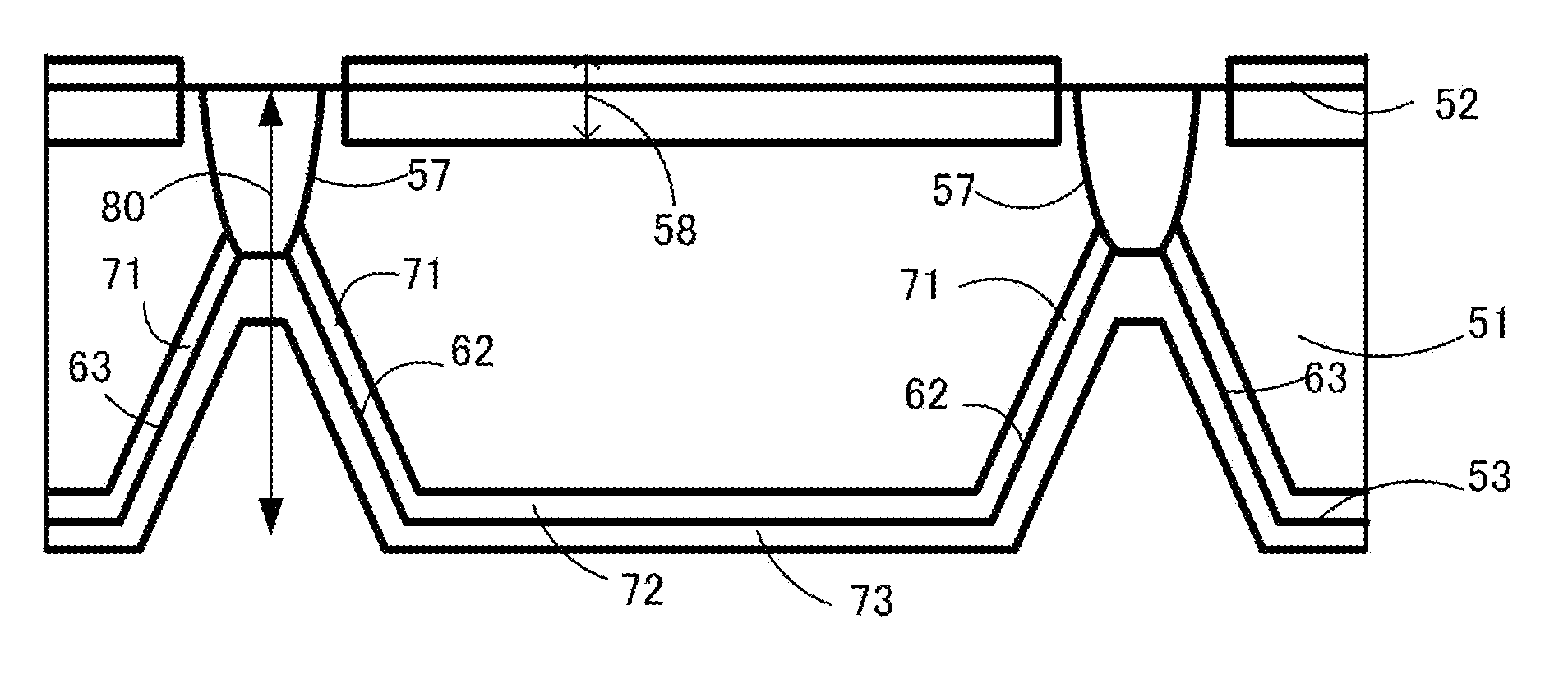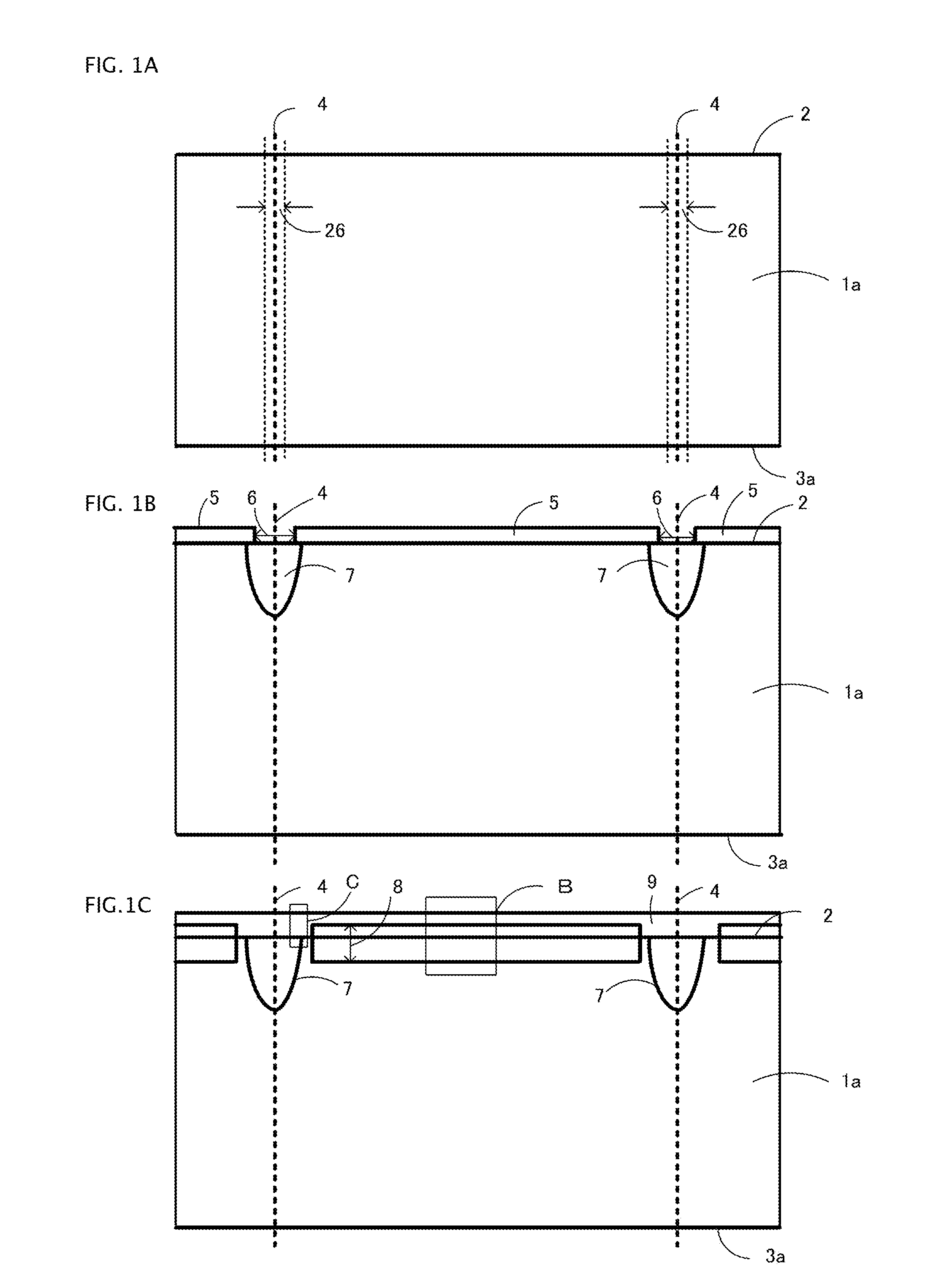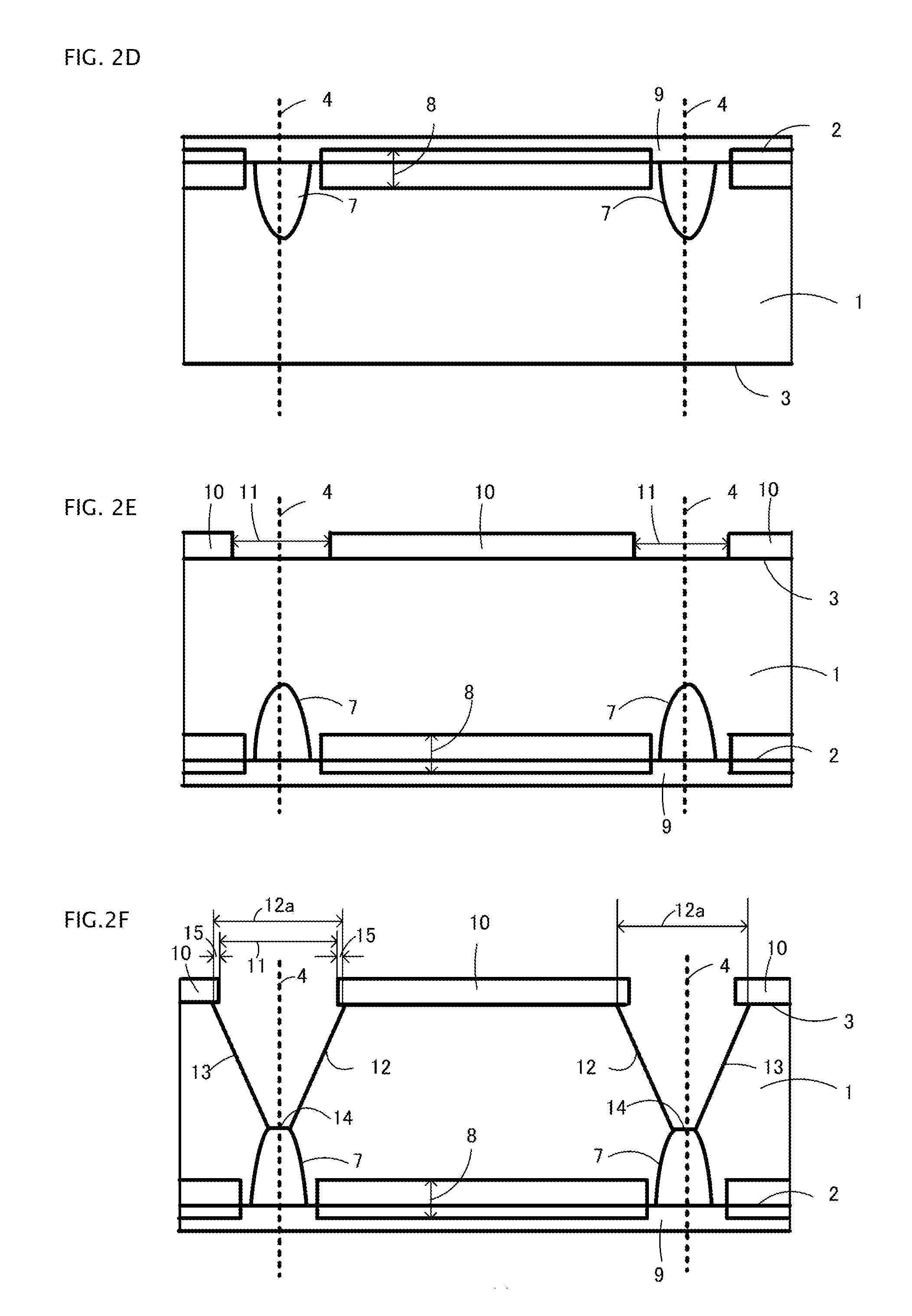Semiconductor device manufacturing method
a manufacturing method and semiconductor technology, applied in the direction of semiconductor devices, electrical devices, transistors, etc., can solve the problems of reducing productivity, reducing resistance, and reducing the blocking voltage of the reverse, so as to increase the electron mobility, reduce the thermal diffusion time, and increase the performance of the igbt
- Summary
- Abstract
- Description
- Claims
- Application Information
AI Technical Summary
Benefits of technology
Problems solved by technology
Method used
Image
Examples
working example 1
[0065]FIGS. 1A to 4J, showing a semiconductor device manufacturing method of a first working example of the invention, are main portion manufacturing step sectional views shown in order of step. This is an example of a reverse blocking IGBT having a planar gate structure.
[0066]Firstly, in FIG. 1A, wafer 1a with a thickness in the region of, for example, 400 μm, wherein the directions of orientation flat (OF) 25 in the (100) plane are directions, is prepared, as shown in FIGS. 5A to 5C. As the directions of OF 25 coincide with the directions of dicing lines 26 when chips are removed from wafer 1a, the directions of dicing lines 26 are also the directions.
[0067]FIG. 5A is a plan view of the wafer of FIG. 1A, FIG. 5B is a sectional view of FIG. 5A, and FIG. 5C is an enlarged view of an A portion of FIG. 5B. Also, the series of step sectional views are sectional views corresponding to FIG. 5C.
[0068]Next, in FIG. 1B, using mask 5 on which is formed a pattern having apertures 6 in place...
working example 2
[0084]FIGS. 9A to 9C, showing a semiconductor device manufacturing method of a second working example of the invention, are main portion manufacturing step sectional views shown in order of step. A description will be given of points differing from Working Example 1. From FIG. 1A to FIG. 2D, manufacturing is carried out in the same steps as in Working Example 1.
[0085]In FIG. 9A, after the step of FIG. 2D, ion implantation 18 is carried out with an accelerating voltage of 80 keV and a dose of 1×1014 cm−2 in order to form collector layer 22. Ion implantation 18 is carried out at a tilt angle of 7° with respect to back surface 3. As conditions for ion implantation 18, it is preferable that it is carried out over the whole of back surface 3 with ranges of boron 19 of 40 keV to 150 keV for the accelerating voltage and 1×1013 cm−2 to 1×1015 cm−2 for the dose.
[0086]Next, in FIG. 9B, a resist is applied over the whole of the back surface 3. Continuing, using a double-sided exposure device, ...
working example 3
[0091]FIGS. 10A to 13J, showing a semiconductor device manufacturing method of a third working example of the invention, are main portion manufacturing step sectional views shown in order of step. This is an example of a reverse blocking IGBT having a trench gate structure.
[0092]In FIG. 10A, wafer 51a with a thickness in the region of, for example, 400 μm, wherein the directions of OF 75 in the (100) plane are directions, is prepared, as shown in FIGS. 14A to 14C. This crystal orientation is selected in order that, when making the gate structure of the IGBT a trench gate, it is possible to form the longitudinal direction of the trench perpendicular to or parallel to the directions of OF 75. By selecting these directions (orientation), it is possible to make the plane in which a channel is formed the (100) plane, which has few interface states. With the (100) plane, it is possible to increase the electron mobility, and it is possible to reduce the channel resistance. Also, as the di...
PUM
| Property | Measurement | Unit |
|---|---|---|
| blocking voltage | aaaaa | aaaaa |
| thickness | aaaaa | aaaaa |
| temperature | aaaaa | aaaaa |
Abstract
Description
Claims
Application Information
 Login to View More
Login to View More - R&D
- Intellectual Property
- Life Sciences
- Materials
- Tech Scout
- Unparalleled Data Quality
- Higher Quality Content
- 60% Fewer Hallucinations
Browse by: Latest US Patents, China's latest patents, Technical Efficacy Thesaurus, Application Domain, Technology Topic, Popular Technical Reports.
© 2025 PatSnap. All rights reserved.Legal|Privacy policy|Modern Slavery Act Transparency Statement|Sitemap|About US| Contact US: help@patsnap.com



